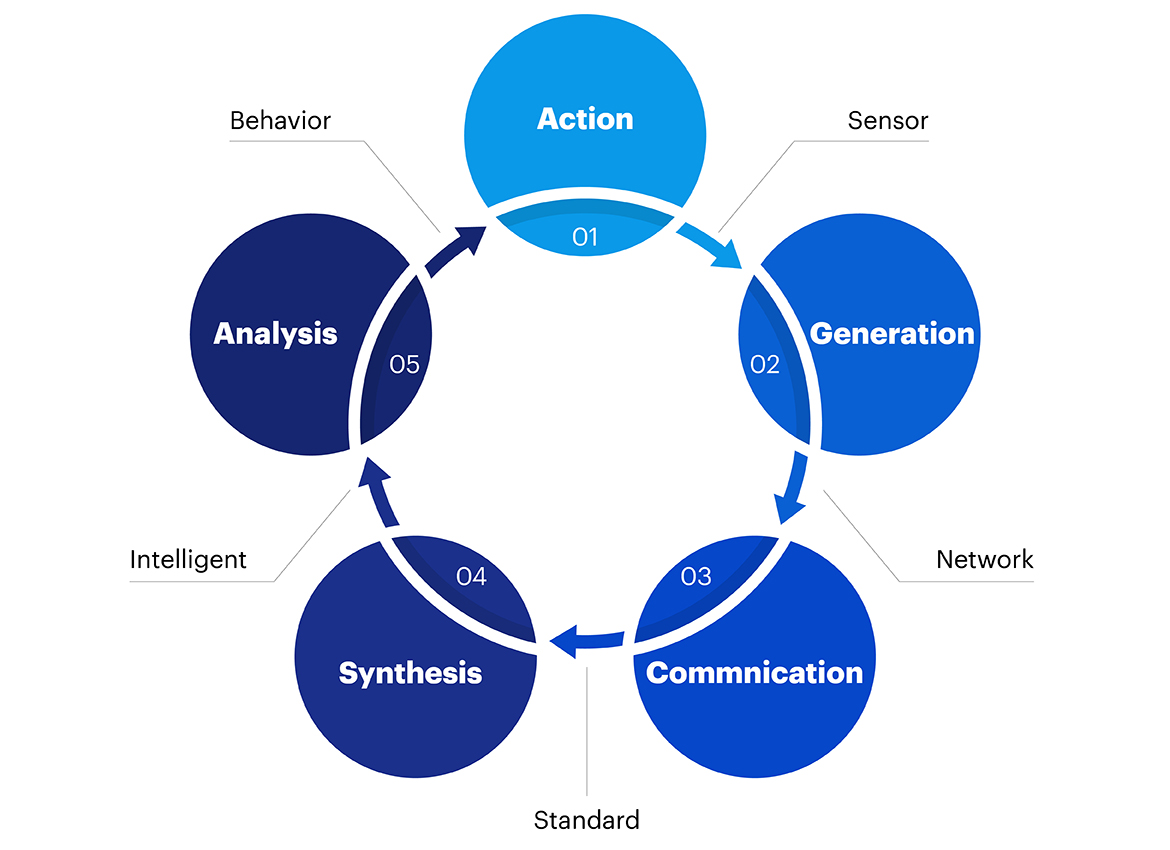IoT is a new technology trend that has far-reaching effects on the real estate industry. However, what is the IoT-based method to increase real estate value and the challenge real estate companies need to overcome in order to maximize IoT value?
How IoT impacts real estate
IoT includes technology and applications that are equipped on certain devices at fixed or flexible locations to collect and generate all kinds of information. This connected data can be extracted for instant data analysis and “smart” action suggestions afterward. The concept of IoT lies in its ability to make physical objects transfer the data about condition, position, or other attribution by associated sensors via the internet. Companies in the real estate industry can adopt suitable sensors such as motion tracking, air pressure, light, temperature, water flow sensors, etc., then have data transmitted through the internet so that different applications can exploit it. For instance, the Building Management System (BMS) application can automatically sense, communicate, analyze and give actions corresponding to related people, systems, or devices.
With sensors, IoT technology is capable of turning any object into a source of information about that object and its surroundings. This creates a new way to differentiate a product or service or to have a new source of value. The data stream forms a loop and produces the values as shown in the following figure:
-

Figure 1: IoT-based data-to-value loop
The data processing loop goes through 5 stages each of which is triggered by different technologies:
- Stage 1 “Generation”: Based on “Sensor” technology to collect or generate data from a physical object or its surroundings
- Stage 2 “Communication”: Using “Network” technologies such as the Internet to transmit information from the “sensor” to the desired place
- Stage 3 “Synthesis”: Based on communication “Standards” that allow the synthesis of information from different sources or different networks
- Stage 4 “Analysis”: Using “Intelligence” technology to analyze aggregated information to gain insights
- Stage 5 “Behavior”: Using technologies that can automate behavior or support human decisions to take appropriate action when analyzing physical objects
Through each stage from 1 to 5, the values extracted from the data increase.
3 IoT-based value-adding strategies
Real estate companies that focus on costs and profits will tend to seek to improve profit margins through cost savings and operational efficiency, with little concern for the connectivity that IoT can bring. However, IoT applications offer more capabilities which allow real estate companies to use the data generated through connected systems towards differentiating services and identifying potential revenue opportunities.
Real estate companies can leverage the value of IoT through 3 different strategies:
1. Generate value through efficiency
IoT technology helps real estate companies increase efficiency through enhanced building performance. Building management systems that integrate IoT technology can be used to reduce energy consumption or reduce repair, maintenance, and administrative costs.
- Using data collected from motion sensors in residential buildings to adjust air conditioning and lighting in real-time, thereby reducing energy costs and optimizing the environment for the intended purpose.
- The continuous monitoring and prediction capabilities of IoT-enabled buildings can also foreshadow repair or maintenance problems by allowing building operation managers to take appropriate action before tenants noticed the problem.
- Detailed real-time monitoring of energy-consuming devices in buildings and better connection to smart grids. Similar to electricity; water supply and sewerage systems are continuously monitored and provide various information (such as lower rainfall and broken pipes) that can help buildings identify supply shortages and better prepare for the use and storage of water resources overall.
- For waste management, sensors in smart bins can transmit volume information to help collectors optimize pick-up times and plan appropriate disposal of different types of waste.
- IoT-enabled buildings can ease security concerns for both owners and tenants. Real-time monitoring can enhance internal security, while advanced weather sensors provide warnings of adverse weather events.
2. Generate value through differentiated services
- Utilizing information to identify unmet consumer needs, deliver more sophisticated services to tenants, transform tenant and user experiences, and contribute to the ecosystem broader.
- Incorporating environmental data collected by the BMS (temperature and air quality) allows real estate companies to understand the optimal temperature and ventilation levels for a particular day to have a cleaner and healthier environment for residents.
- Designing and building commercial buildings to accommodate changing consumption patterns, such as “live-work-play” combinations using user and tenant behavior data.
3. Generate value through new revenue streams
New services from data analytics can generate new revenue streams. For example, data in a building can assist advertising agencies or urban planners (when permitted) in analyzing, evaluating, and making useful recommendations for individuals or communities. In other cases, real estate owners can capture and analyze customer demographics, purchases, and movements and offer the data as a service to their tenants. In addition, building operational information can be sold to investment institutions to enable them to make informed investment decisions.

Challenges to overcome to maximize IoT value
IoT technology offers many potential benefits, but its implementation is largely still in its infancy as some bottlenecks limit the flow of information and thus reduce the application value for real estate companies. The following 3 bottlenecks create 3 major challenges that real estate companies need to overcome, to capture values:
- The effectiveness: The bottleneck is the “Synthesis” stage in the value loop (Figure 1), the main challenges lie in the ability of integration and interoperability.
- The differentiation of the service: The bottleneck is the “Analysis” phase in the value loop (Figure 1) where there is an inability to leverage the data generated by IoT-enabled buildings.
- New revenue streams creation: The bottleneck is the “Action” phase in the value loop (Figure 1) where the data cannot be visualized and displayed to the customer.
These 3 challenges are not only within the scope of technology, but also the awareness, new skills of employees and building a culture of exploiting and using data in the organization’s operations.
IoT technology brings benefits for real estate companies in creating new value through 3 effective strategies, differentiating or generating new revenue streams. However, due to challenges in the early stages, companies need strategic consultants, quick implementation, and appropriate team coaching to maximize the new feasible value.




